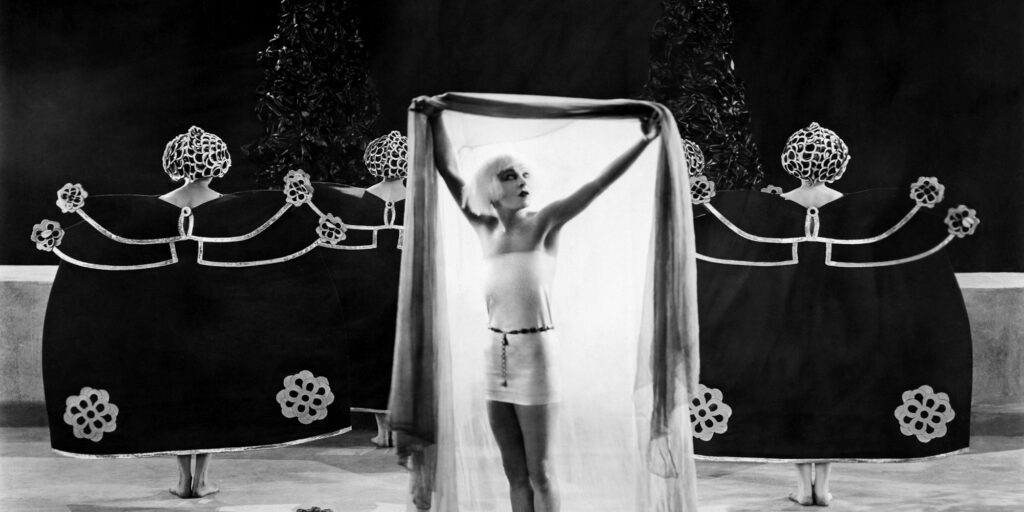ONE HUNDRED YEARS AGO: 1922

Curated by Mariann Lewinsky and Karl Wratschko
Since 2003 the festival has dedicated a strand to films from 100 years ago, and with this edition we will have covered 27 years of film history, from 1903 to 1922 plus 1896 to 1902 in the Century of Cinema strand. We started out as explorers in uncharted territories, presenting a majority of films that had not been seen in public for decades. Our research in archival vaults around the world has led, year after year, to astonishing discoveries and to a number of monographic programmes (and Dvd editions) adding substantial chapters to our knowledge of cinema, among them the series dedicated to comic actresses and suffragettes, views from the Ottoman Empire and director Albert Capellani, whose magnificent Les Misérables (1912) in the Recovered and Restored section shouldn’t be missed.
Now that we are in the 1920s and the 2020s our material, mission and audience have radically changed. In the past the films were mostly interesting if unknown; for 1922, most of the interesting films we found happened to be well-known works, if not classics, by Chaplin, Delluc, Dreyer, Dwan, Flaherty, Murnau, Nazimova, Reiniger, Stroheim and Vertov. Several titles included in the programme have enjoyed a high reputation right from their first appearance. Some are easily accessible on Dvd or YouTube. Nanook of the North and Nosferatu might be called outright popular. Why screen them in Bologna?
We have observed an important change in the audience recently, with new generations and a much wider public now attending. Many of the spectators have not experienced all the great films of the past on a big screen, which amounts to not having seen them. The 1922 strand offers the possibility to discover Salomé, La Femme de nulle part, Robin Hood or Die Gezeichneten and many more films in a proper projection on a cinema screen (and Nosferatu or Foolish Wives on the giant screen of Piazza Maggiore). To know what cinema is about, it is crucial to view films as they were meant to be seen, in their proper theatrical setting and with the full impact of the luminous image on a big screen. This holds especially true for the films of 1922, which experiment in different ways to enlarge cinema’s potential of expression, of aesthetic and emotional effect. There were also technical innovations, such as the new 9.5mm format, which changed the world of amateur film forever. We will celebrate the 1922 launch of the Pathé Baby in the festival section Great Small Gauges. As we do every year, we have inserted newsreel footage to nudge you to inform yourself about the contemporary political situation and we have been also on the lookout for good shorts. The most beautiful film in the entire festival may be the British advertisement Changing Hues from 1922. But let’s discuss that after the festival.
Mariann Lewinsky and Karl Wratschko
Program
Saturday 25/06/2022
18:15
Cinema Lumiere - Sala Officinema/Mastroianni
1922: Newsreels / DIE GEZEICHNETEN
1922: Newsreels / DIE GEZEICHNETEN
Manuela Padoan (Newsreel), Mariann Lewinsky and Karl Wratschko (Die Gezeichneten)
Maud Nelissen, harp accompaniment by Eduardo Raon
Sunday 26/06/2022
10:10
Auditorium DAMSLab
Case Study: Restoring Erich von Stroheim’s Foolish Wives
Case Study: Restoring Erich von Stroheim’s Foolish Wives
Sunday 26/06/2022
11:30
Cinema Lumiere - Sala Officinema/Mastroianni
Aschenputtel/ANNA-LIISA
Aschenputtel/ANNA-LIISA
Stephen Horne
Sunday 26/06/2022
22:00
Piazzetta Pier Paolo Pasolini
NANOOK OF THE NORTH
NANOOK OF THE NORTH
Francesco Rufini
Harp accompaniment by Eduardo Raon, drums accompaniment by Frank Bockius
Monday 27/06/2022
11:30
Cinema Lumiere - Sala Officinema/Mastroianni
KINO-PRAVDA/RÊVE D’OPIUM/LAOGONG ZHI AIQUING/PAY DAY
KINO-PRAVDA/RÊVE D’OPIUM/LAOGONG ZHI AIQUING/PAY DAY
Kate Guyonvarch (Roy Export/Association Chaplin) and Cecilia Cenciarelli
Stephen Horne, drums accompaniment by Frank Bockius
Monday 27/06/2022
12:00
Auditorium DAMSLab
A question of human relationships. From Nanook of the North to Inuit Cinema
A question of human relationships. From Nanook of the North to Inuit Cinema
Conference by Francesco Rufini
Monday 27/06/2022
21:45
Piazza Maggiore
FOOLISH WIVES
FOOLISH WIVES
Robert Byrne (San Francisco Silent Film Festival), Dave Kehr (MoMA) and Cecilia Cenciarelli
Musiche scritte e dirette da Timothy Brock, eseguite dall’Orchestra del Teatro Comunale di Bologna
Tuesday 28/06/2022
11:30
Cinema Lumiere - Sala Officinema/Mastroianni
Éclair-Journal 26/LA FEMME DE NULLE PART
Éclair-Journal 26/LA FEMME DE NULLE PART
Harp accompaniment by Eduardo Raon
Tuesday 28/06/2022
19:00
Cinema Lumiere - Sala Officinema/Mastroianni
Secrets of a World Industry/SALOMÉ
Secrets of a World Industry/SALOMÉ
Andrea Peraro and Karl Wratschko
Drums accompaniment by Valetina Magaletti
Wednesday 29/06/2022
11:30
Cinema Lumiere - Sala Officinema/Mastroianni
Dornröschen/Dancing Grace/LE QUINZIÈME PRÉLUDE DE CHOPIN
Dornröschen/Dancing Grace/LE QUINZIÈME PRÉLUDE DE CHOPIN
John Sweeney, harp accompaniment by Eduardo Raon
Wednesday 29/06/2022
18:45
Auditorium DAMSLab
NOSFERATU AND THE BIRTH OF VAMPIRE CINEMA
NOSFERATU AND THE BIRTH OF VAMPIRE CINEMA
Conference by Christopher Frayling
Wednesday 29/06/2022
22:00
Piazzetta Pier Paolo Pasolini
CHANGING HUES/CAINÀ OVVERO L’ISOLA E IL CONTINENTE
CHANGING HUES/CAINÀ OVVERO L’ISOLA E IL CONTINENTE
Andrea Peraro and Karl Wratschko
Sonorization by Laura Agnusdei (tenor sax and electronics), Agnese Banti (voice and electronics), Stefano Pilia (guitar and electronics) and Cecilia Stacchiotti (keyboards and electronics)
Friday 01/07/2022
11:45
Cinema Lumiere - Sala Officinema/Mastroianni
1922: SAMAMA CHIKLI RECOVERED – ZOHRA 100
1922: SAMAMA CHIKLI RECOVERED – ZOHRA 100
Gabriel Thibaudeau
Friday 01/07/2022
18:00
Cinema Lumiere - Sala Officinema/Mastroianni
THE ENCHANTED CITY / BLIND HUSBANDS
THE ENCHANTED CITY / BLIND HUSBANDS
Janneke van Dalen (Österreichisches Filmmuseum)
Donald Sosin and Antonio Coppola
Saturday 02/07/2022
17:45
Cinema Lumiere - Sala Officinema/Mastroianni
ROBIN HOOD
ROBIN HOOD
Ehsan Khoshbakht
Donald Sosin, and Frank Bockius on drums
Saturday 02/07/2022
21:45
Piazza Maggiore
NOSFERATU – EINE SYMPHONIE DES GRAUENS
NOSFERATU – EINE SYMPHONIE DES GRAUENS
Gabriele Mainetti
Musics written and directed by Timothy Brock, performed by Orchestra del Teatro Comunale di Bologna


